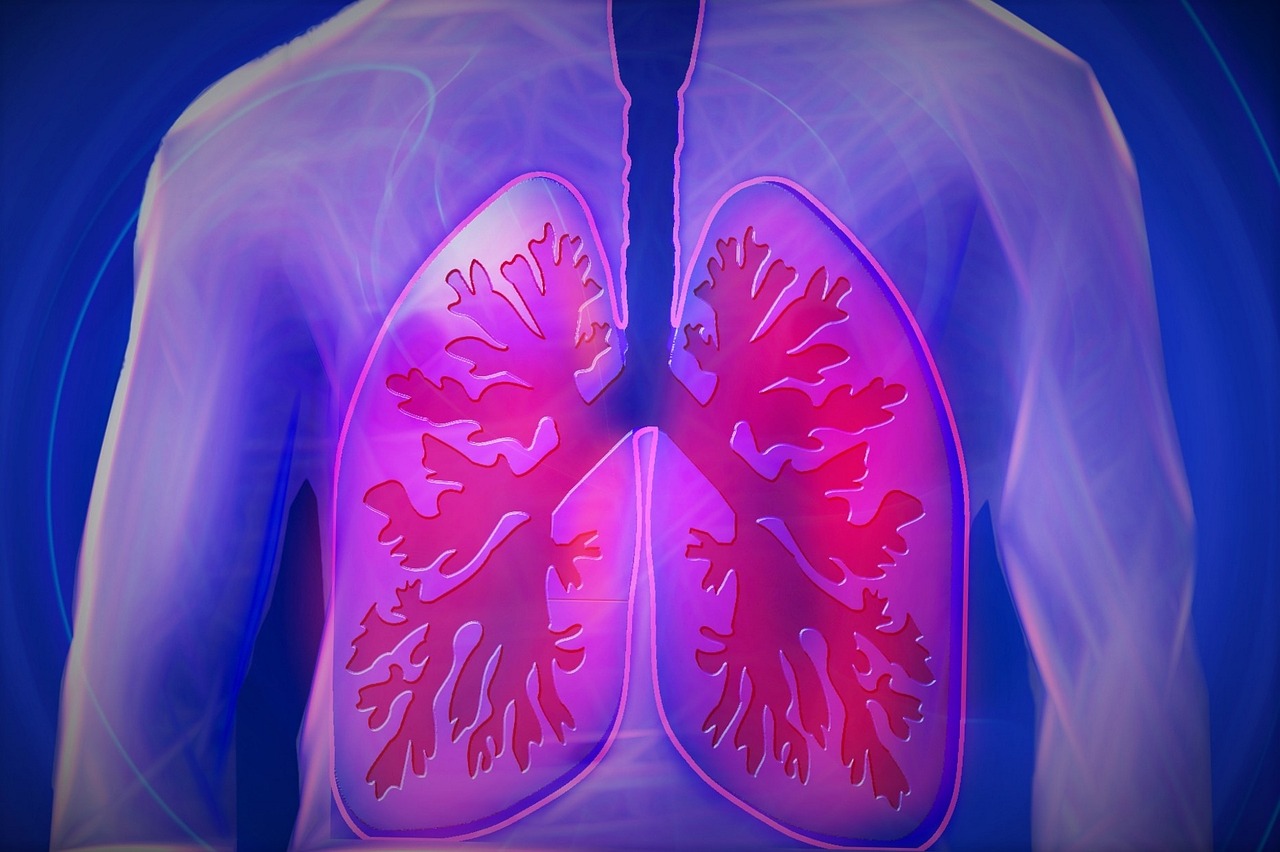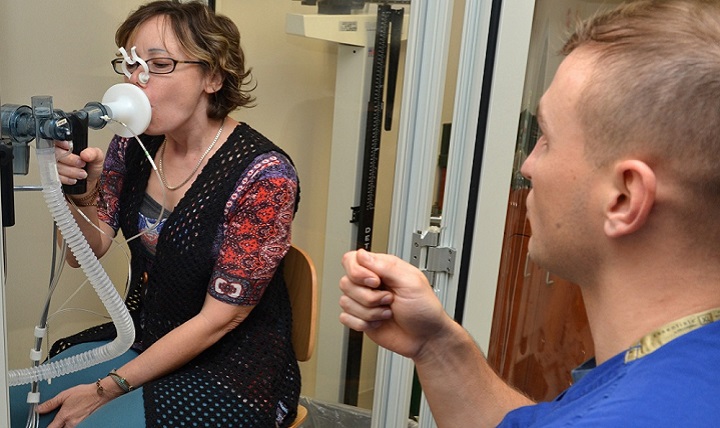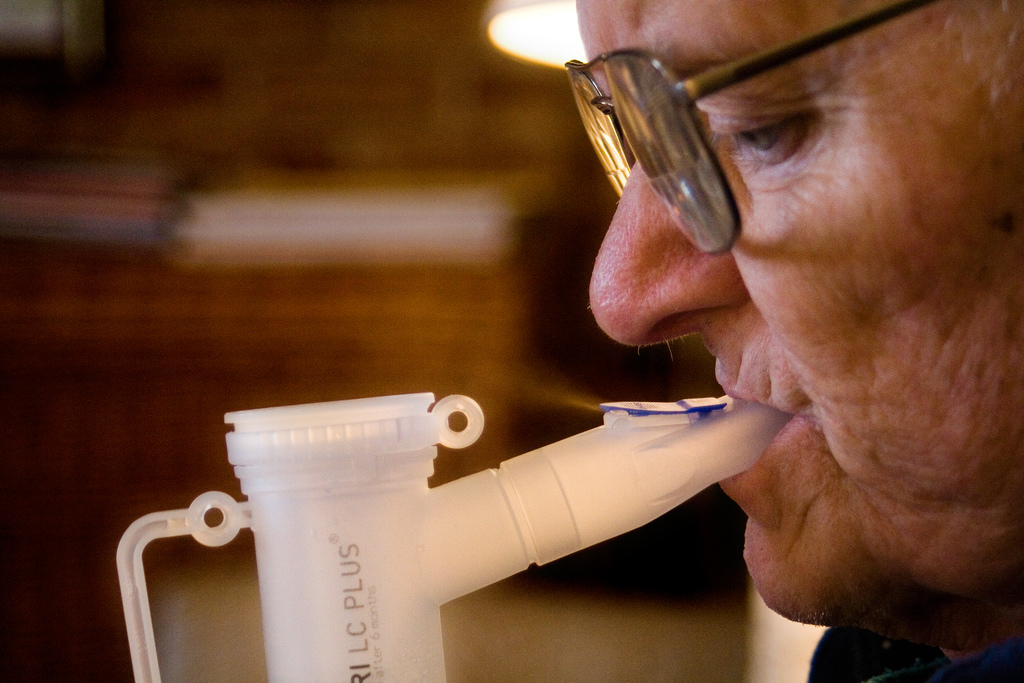What Is COPD, How Can It Be Treated, and What Are The Risks?
Posted by Anna Kucirkova on 2nd Mar 2018
What Is COPD, How Can It Be Treated, and What Are The Risks?

Chronic Obstructive Pulmonary Disease (COPD) is by definition an umbrella term used to describe progressive lung diseases including emphysema, chronic bronchitis, refractory (non-reversible) asthma, and some forms of bronchiectasis. This disease is characterized by increasing breathlessness. Here we discuss what COPD is, how it can be treated, and what are the risks.
Many people mistake their increased breathlessness and coughing as a normal part of aging. In the early stages of the disease, you may not notice the symptoms. COPD can develop for years without noticeable shortness of breath. You begin to see the symptoms in the more developed stages of the disease.
Damage to the lung tissue over time causes physical changes in the tissues of the lungs and clogging of the airways with thick mucus. The tissue damage in the lungs leads to poor compliance (the elasticity, or ability of the lung tissue to expand).
The decrease in elasticity of the lungs means that oxygen in the air cannot get by obstructions (for example, thick mucus plugs) to reach air spaces (alveoli) where oxygen and carbon dioxide exchange occurs in the lung. Consequently, the person exhibits a progressive difficulty, first coughing to remove obstructions like mucus, and then in breathing, especially with exertion.
Chronic Obstructive Pulmonary Disease Symptoms

People with COPD can oftenmistake their symptoms for other respiratory problems, such as exercise-induced asthma or a bad cold. If you have any of the following symptoms, you should see your doctor as soon as possible:
- Wheezing
- Tightness in the chest
- Fatigue
- Multiple respiratory infections
- Shortness of breath (dyspnea) that gets worse with mild activity
- Having to clear your throat first thing in the morning, due to excess mucus in your lungs
- A chronic cough that may produce mucus (sputum) that may be clear, white, yellow or greenish
- Blueness of the lips or fingernail beds (cyanosis)
- Frequent respiratory infections
- Unintended weight loss (in later stages)
- Swelling in your ankles, feet or legs
If left untreated, COPD can lead to hospitalization and even death. Be proactive if you are showing signs of the disease and be evaluated by your physician promptly.
What Causes COPD?
The main cause of COPD in developed countries is tobacco smoking. In the developing world, COPD often occurs in people exposed to fumes from burning fuel for cooking and heating in poorly ventilated homes.
Only about 20 to 30 percent of chronic smokers may develop clinically apparent COPD, although many smokers with long smoking histories may develop reduced lung function. Some smokers develop less common lung conditions. They may be misdiagnosed as having COPD until a more thorough evaluation is performed.
Exposure to certain gases or fumes in the workplace, exposure to heavy amounts of secondhand smoke and pollution, frequent use of a cooking fire without proper ventilation, and genetic problems like Alpha-1 Antitrypsin Deficiency are also causes of COPD.
Stages of COPD

One way to establish stages for chronic obstructive pulmonary disease is the Global Initiative for Chronic Obstructive Lung Disease program (GOLD).
The staging is based on the results of a pulmonary function test. Specifically, the forced expiratory volume (how much air one can exhale forcibly) in one second (FEV1) of a standard predicted value is measured, based on the individual patient’s physical parameters.
The stages are as follows:
- Stage I is FEV1 of equal or more than 80% of the predicted value
- Stage II is FEV1 of 50% to 79% of the predicted value
- Stage III is FEV1 of 30% to 49% of the predicted value
- Stage IV is FEV1 of less than 30% of predicted value or an FEV1 less than 50% of predicted value plus respiratory failure
Other staging methods are similar but are based on the severity of the shortness of breath symptom.
COPD Treatment

Medical treatments of chronic obstructive pulmonary disease include bronchodilators, steroids, mucolytic agents, oxygen therapy, and surgical procedures such as bullectomy, lung volume reduction surgery, and lung transplantation.
The treatments are often based on the stage of chronic obstructive pulmonary disease, for example:
- Stage I –mistake their symptoms for other respiratory problems
- Stage II – short-acting bronchodilator as needed andlong-acting bronchodilatorsplus cardiopulmonary rehabilitation
- Stage III – short-acting bronchodilator as needed, long-acting bronchodilators, cardiopulmonary rehabilitation, andinhaled glucocorticoids for repeated exacerbations
- Stage IV – as needed, long-acting bronchodilators, cardiopulmonary rehabilitation, inhaled glucocorticoids, long-term oxygen therapy, possible lung volume reduction surgery, and possible lung transplantation (stage IV has been termed “end-stage” chronic obstructive pulmonary disease)
The three major goals of the comprehensive treatment and management of chronic obstructive pulmonary disease are to reduce airflow limitation, prevent and treat secondary medical complications, decrease respiratory symptoms, and improve quality of life.
The patient may need to be hospitalized if they develop severe respiratory dysfunction, if the disease progresses, or if they have other serious respiratory diseases. The purpose of hospitalization is to treat symptoms and to prevent further deterioration.
The patient may be admitted to an intensive care unit (ICU) if they require invasive or noninvasive mechanical ventilation or if they have the following symptoms:
- Confusion
- Lethargy
- Respiratory muscle fatigue
- Worsening hypoxemia (not enough oxygen in the blood)
- Respiratory acidosis (retention of carbon dioxide in the blood)
Treatment of Moderate to Severe COPD
Doctors often use these additional therapies for people with moderate or severe COPD:
- Oxygen therapy– Some people with COPD use oxygen only during activities or while sleeping. Others use oxygen all the time. Oxygen therapy can improve quality of life and is the only COPD therapy proven to extend life.
- Pulmonary rehabilitation program. These programs generally combine education, exercise training, nutrition advice and counseling. You’ll work with a variety of specialists, who can tailor your rehabilitation program to meet your needs.
Even with ongoing treatment, you may experience times when symptoms become worse for days or weeks. This is called an acute exacerbation, and it may lead to lung failure if you don’t receive quick and appropriate treatment.
Exacerbations may be caused by a respiratory infection, air pollution, or other triggers of inflammation. Whatever the cause, it’s important to seek prompt medical help if you notice a sustained increase in coughing, a change in your mucus or if you have a harder time breathing.
When exacerbations occur, you may need additional medications, supplemental oxygen, or treatment in the hospital. Once symptoms improve, your doctor will talk with you about measures to prevent future exacerbations.
Surgical Procedures
Surgery is an option for some people with some forms of severe emphysema who aren’t helped sufficiently by medications alone. Surgical options include:
- Lung volume reduction surgery. In this surgery, your surgeon removes small wedges of damaged lung tissue from the upper lungs. This creates extra space in your chest cavity so that the remaining healthier lung tissue can expand, and the diaphragm can work more efficiently.
- Lung transplant.Lung transplantation may be an option for certain people who meet specific criteria. Transplantation can improve your ability to breathe and to be active. However, it’s a major operation that has significant risks, such as organ rejection, and it requires taking lifelong immune-suppressing medications.
- Bullectomy. Large air spaces (bullae) form in the lungs when the walls of the air sacs are destroyed. These bullae can become very large and cause breathing problems. In a bullectomy, doctors remove bullae from the lungs to help improve airflow.
Can You Live Well With COPD?

There are many things you can do at home to stay as healthy as you can.
- Avoid things that can irritate your lungs, such as smoke and air pollution.
- Use an air filter in your home.
- Get regular exercise to stay as strong as you can.
- Eat well so you can keep up your strength. If you are losing weight, ask your doctor or dietitian about ways to make it easier to get the calories you need.
As COPD progresses, you may have flare-ups when your symptoms quickly get worse and stay worse. It is important to know what to do if this happens. Many doctors will give you an action plan and medicines to help you breathe if you have a flare-up. But if the attack is severe, you may need to go to the emergency room.
Knowing that you have a disease that gets worse over time can be hard. It’s common to feel sad or hopeless sometimes. Having trouble breathing can also make you feel very anxious. If these feelings last, be sure to tell your doctor. Counseling, medicine, and support groups can help you cope.

